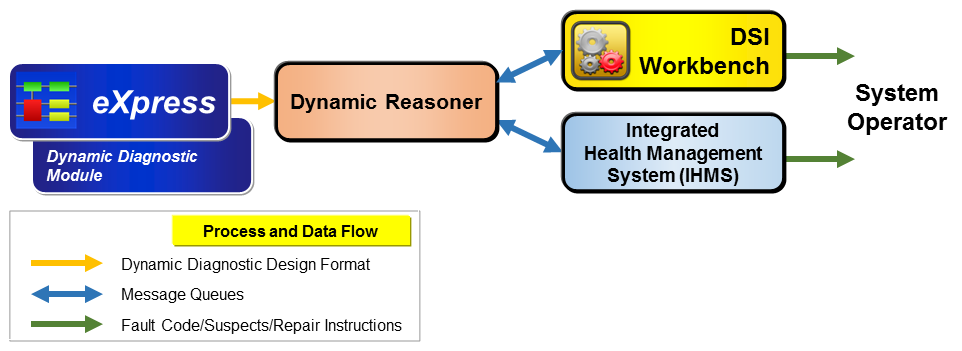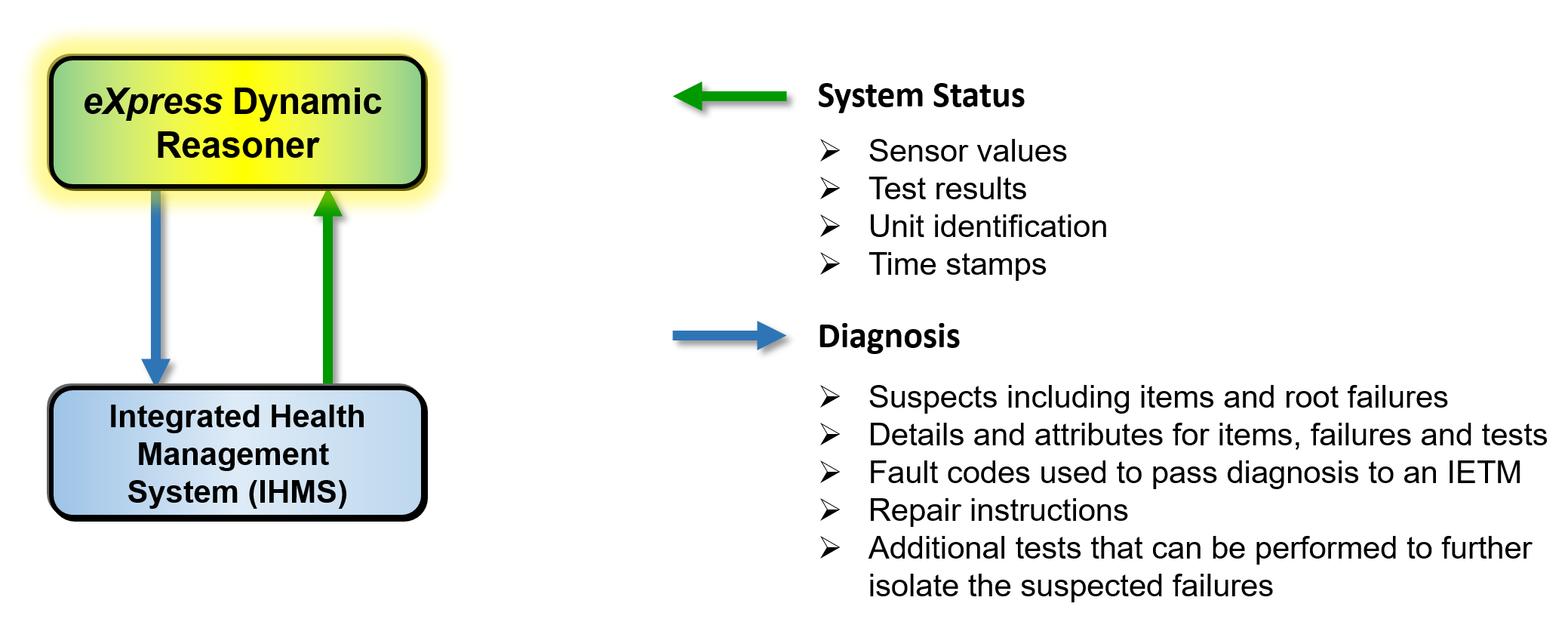

Products
Dynamic Reasoner
The dynamic reasoner allows for embedding of eXpress diagnostics within an application. The main difference between this and the eXpress Embedded Reasoner is that the eXpress Embedded Reasoner uses the pre-calculated diagnostics sequences from eXpress, whereas the dynamic reasoner calculates the diagnostics on-the-fly as tests are performed. This allows for out-of-order testing were when some test cannot be immediately performed due to system conditions, lack of equipment or training then the dynamic reasoner will prompt for alternative tests to isolate the failures.
Development/Data Process Flow
Dynamic diagnostics are developed by creating a functional dependency model in eXpress. A dynamic diagnostic design file is then generated and configured within eXpress for use by the Dynamic Reasoner. The dynamic reasoner communicates with DSI Workbench or an integrated health management system using message queues to receive system status from and send a diagnosis to the integrated health management system. The integrated health management system by querying the reasoner can then either provided a fault code to the user to assist in manual troubleshooting using an integrated electronic technical manual (IETM) or by providing direct repair instructions to the health management system user.

Figure 1 – Dynamic Reasoner Development and Data Flow
Messaging Between the eXpress Dynamic Reasoner and the Health Management System.
Data flow between the health management system software and the dynamic reasoner involves passing the system status (e.g. sensor values or pass/fail values of system tests) to the dynamic reasoner using a message queue. The health management system depending upon configuration then either directly queries the reasoner for a diagnosis of failures or waits for a response from the system status update. The diagnosis may include fault codes for isolated fault groups, lists of suspects, lists of root failures (i.e. the function or failure modes indicted by the diagnostics), repair instructions or additional tests that can be performed to further isolate the suspect failures.

Figure 2 – Messaging between the dynamic reasoner and the IHMS.


